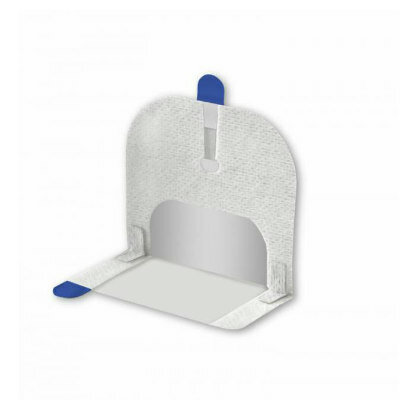AI-Based MRI Pre-Screening Tool Accurately Detects Leadless Implanted Electronic Devices
|
By MedImaging International staff writers Posted on 28 Oct 2022 |

Small leadless implanted electronic devices (LLIEDs) have emerged as a safer alternative to lead-dependent cardiac rhythm-management devices, with advancements in miniaturization, battery technology, and communication. Intrathoracic LLIEDs can not only help in cardiac pacing but also enable the monitoring of cardiovascular and electrophysiologic activity, and non-cardiovascular physiology. However, their subsequent detection and identification (location, general category, specific type, etc.) is critical, especially prior to situations like magnetic resonance imaging (MRI) scans involving electromagnetic and radiofrequency exposures.
In pre-MRI safety screening, existing methods involving direct interaction between the patient and physician, electronic medical records (EMR) and chest X-ray (CXR) provide limited and inadequate information. They are, therefore, insufficient for the recognition of evolving, infrequently used, and much smaller LLIEDs. Moreover, the issue is compounded by the small LLIED size, suboptimal screening technique, motion-related blurring, and similarities in appearance. LLIEDs can easily be overlooked on a CXR during emergency situations. Moreover, the inability to tell whether an LLIED is a pacemaker or a recorder can put the patient at a considerable risk during MRI scan. Although both are considered “MRI conditional,” the pacemaker requires cardiology device and patient oversight before and after, and possibly during, the MRI examination.
Responding to the need for prompt and accurate detection of LLIEDs during MRI pre-screening, researchers at SPIE (Bellingham, WA, USA) had previously developed an artificial intelligence (AI)-based model. In a recent study, the research team assessed the readiness and operational prerequisites of this model with the aim of progressing towards real-world applications. For the pre-deployment assessment, the team used a two-tier cascading methodology comprising LLIED detection (tier 1) followed by classification (tier 2). They performed a five-fold cross validation during tier 1 to assess the durability of the “Original LLIED Model” initially comprising nine LLIED categories. To imitate real-world trialing, they further applied the two-tier cascading AI model on 150 new CXR images from randomly selected newer patients, already revealing three new LLIED categories.
Further, the team incorporated some essential technical developments to facilitate real-world deployment of their AI model. These included a Zero-Footprint (ZF GUI/Viewer) viewing platform for imaging, DICOM-Structured reports (DICOM-SR) for enabling end-user inference-result adjudication and, most importantly, continuous learning with the addition of the 3 new LLIED types to create a 12-class “Updated LLIED Model.” They then used new additional cases to further test this model using the two-tier methodology.
The tier 1 study yielded 100% detection/location sensitivity of LLIEDs for both the 9-class and 12-class models, and its durability was further attested by the five-fold cross validation. In tier 2, both models achieved very high accuracy in identifying the type of LLIED (MRI safety category and specific type). While no LLIEDs remained undetected in tier 1, the few cases of misidentification occurring in tier 2 were attributed to suboptimal image quality. Remarkably, the AI model did not misidentify any of the “MRI stringently conditional” or “MRI unsafe” LLIEDs.
Focusing on mimicking real-world conditions for validating their model, the team incorporated continuous learning, retraining, and modernization of AI models based on end-user experience. This was the first study of its kind to report AI-based radiographic detection and identification of LLIEDs. Going forward, the researchers plan to capitalize on these results and launch the AI model in a relevant clinical setting. They also expect to address the limitations of this study by future retraining and fine-tuning of the AI model.
“LLIEDs span a spectrum of categories based on their MRI exposure safety, from being ‘MRI conditional’ to being ‘MRI unsafe.’ Our AI model for recognizing continuously evolving LLIEDs is based on LLIED classification obtained from the identification and labeling of regions of interest from retrospective and/or future organization-wide CXR data,” explained Richard D. White, an eminent radiologist at Mayo Clinic Florida, who led the research. “While the actual value of the AI model can only be assessed in a true real-world clinical setting, these results harbor optimism in favor of deploying the AI model in the near future for assisting pre-screening evaluation by radiologists for patient safety.”
Related Links:
SPIE
Latest MRI News
- PET/MRI Improves Diagnostic Accuracy for Prostate Cancer Patients
- Next Generation MR-Guided Focused Ultrasound Ushers In Future of Incisionless Neurosurgery
- Two-Part MRI Scan Detects Prostate Cancer More Quickly without Compromising Diagnostic Quality
- World’s Most Powerful MRI Machine Images Living Brain with Unrivaled Clarity
- New Whole-Body Imaging Technology Makes It Possible to View Inflammation on MRI Scan
- Combining Prostate MRI with Blood Test Can Avoid Unnecessary Prostate Biopsies
- New Treatment Combines MRI and Ultrasound to Control Prostate Cancer without Serious Side Effects
- MRI Improves Diagnosis and Treatment of Prostate Cancer
- Combined PET-MRI Scan Improves Treatment for Early Breast Cancer Patients
- 4D MRI Could Improve Clinical Assessment of Heart Blood Flow Abnormalities
- MRI-Guided Focused Ultrasound Therapy Shows Promise in Treating Prostate Cancer
- AI-Based MRI Tool Outperforms Current Brain Tumor Diagnosis Methods
- DW-MRI Lights up Small Ovarian Lesions like Light Bulbs
- Abbreviated Breast MRI Effective for High-Risk Screening without Compromising Diagnostic Accuracy
- New MRI Method Detects Alzheimer’s Earlier in People without Clinical Signs
- MRI Monitoring Reduces Mortality in Women at High Risk of BRCA1 Breast Cancer
Channels
Radiography
view channel
Novel Breast Imaging System Proves As Effective As Mammography
Breast cancer remains the most frequently diagnosed cancer among women. It is projected that one in eight women will be diagnosed with breast cancer during her lifetime, and one in 42 women who turn 50... Read more
AI Assistance Improves Breast-Cancer Screening by Reducing False Positives
Radiologists typically detect one case of cancer for every 200 mammograms reviewed. However, these evaluations often result in false positives, leading to unnecessary patient recalls for additional testing,... Read moreUltrasound
view channel
Deep Learning Advances Super-Resolution Ultrasound Imaging
Ultrasound localization microscopy (ULM) is an advanced imaging technique that offers high-resolution visualization of microvascular structures. It employs microbubbles, FDA-approved contrast agents, injected... Read more
Novel Ultrasound-Launched Targeted Nanoparticle Eliminates Biofilm and Bacterial Infection
Biofilms, formed by bacteria aggregating into dense communities for protection against harsh environmental conditions, are a significant contributor to various infectious diseases. Biofilms frequently... Read moreNuclear Medicine
view channel
New SPECT/CT Technique Could Change Imaging Practices and Increase Patient Access
The development of lead-212 (212Pb)-PSMA–based targeted alpha therapy (TAT) is garnering significant interest in treating patients with metastatic castration-resistant prostate cancer. The imaging of 212Pb,... Read moreNew Radiotheranostic System Detects and Treats Ovarian Cancer Noninvasively
Ovarian cancer is the most lethal gynecological cancer, with less than a 30% five-year survival rate for those diagnosed in late stages. Despite surgery and platinum-based chemotherapy being the standard... Read more
AI System Automatically and Reliably Detects Cardiac Amyloidosis Using Scintigraphy Imaging
Cardiac amyloidosis, a condition characterized by the buildup of abnormal protein deposits (amyloids) in the heart muscle, severely affects heart function and can lead to heart failure or death without... Read moreGeneral/Advanced Imaging
view channel
New AI Method Captures Uncertainty in Medical Images
In the field of biomedicine, segmentation is the process of annotating pixels from an important structure in medical images, such as organs or cells. Artificial Intelligence (AI) models are utilized to... Read more.jpg)
CT Coronary Angiography Reduces Need for Invasive Tests to Diagnose Coronary Artery Disease
Coronary artery disease (CAD), one of the leading causes of death worldwide, involves the narrowing of coronary arteries due to atherosclerosis, resulting in insufficient blood flow to the heart muscle.... Read more
Novel Blood Test Could Reduce Need for PET Imaging of Patients with Alzheimer’s
Alzheimer's disease (AD), a condition marked by cognitive decline and the presence of beta-amyloid (Aβ) plaques and neurofibrillary tangles in the brain, poses diagnostic challenges. Amyloid positron emission... Read more.jpg)
CT-Based Deep Learning Algorithm Accurately Differentiates Benign From Malignant Vertebral Fractures
The rise in the aging population is expected to result in a corresponding increase in the prevalence of vertebral fractures which can cause back pain or neurologic compromise, leading to impaired function... Read moreImaging IT
view channel
New Google Cloud Medical Imaging Suite Makes Imaging Healthcare Data More Accessible
Medical imaging is a critical tool used to diagnose patients, and there are billions of medical images scanned globally each year. Imaging data accounts for about 90% of all healthcare data1 and, until... Read more
Global AI in Medical Diagnostics Market to Be Driven by Demand for Image Recognition in Radiology
The global artificial intelligence (AI) in medical diagnostics market is expanding with early disease detection being one of its key applications and image recognition becoming a compelling consumer proposition... Read moreIndustry News
view channel
Bayer and Google Partner on New AI Product for Radiologists
Medical imaging data comprises around 90% of all healthcare data, and it is a highly complex and rich clinical data modality and serves as a vital tool for diagnosing patients. Each year, billions of medical... Read more



















